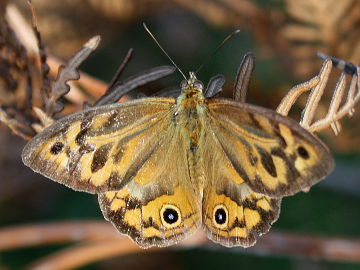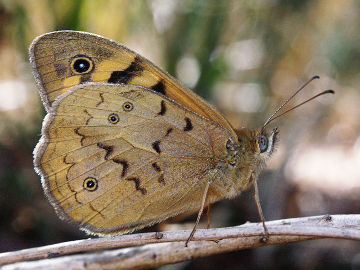Common Brown
Heteronympha merope
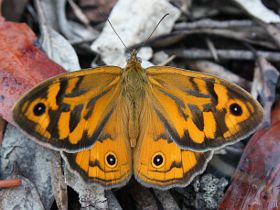
Appearance: Upperside orange and brown. Males have an indistinct, elongated sex-brand on the fore wing. Male underside light brown with dark markings and eyespots. Female hind wing underside grey-brown marbled, fore wing underside more colourful.
Wingspan: 5.5–6.5 cm
Season: 1 extended generation, spring until autumn.
Range: South-eastern Australia (from eastern QLD across NSW, ACT, and VIC into south-eastern SA), south-western WA, and TAS.
Habitat: Wide range of habitats, in particular open forest and woodland; also in suburban parks and gardens.
Notes
As its name suggests, the Common Brown is one of the most abundant and widespread butterflies of Australia. It can be found almost anywhere in large numbers and particularly prefers open forests, woodlands, and parks. The Common Brown can be found throughout south-eastern QLD, eastern and southern NSW, the ACT, VIC, south-eastern SA, south-western WA, and TAS. The populations in WA and TAS are classified as separate subspecies, duboulayi and salazar, respectively.
Curiously, males and females of the Common Brown look rather different and could easily be mistaken for two entirely separate species. The males usually appear in springtime, several weeks before the females, while the females are more commonly encountered in summer and autumn. Common Browns are generally very alert and quite difficult to approach. They frequently settle on the bare ground with their wings closed such that they are perfectly camouflaged and almost invisible until disturbed.
There are several somewhat similar species across Australia, in particular in the genus Heteronympha. However, due to its large size and overall appearance the Common Brown can usually be identified without too much trouble.
Additional Photos
Heteronympha merope subsp. merope
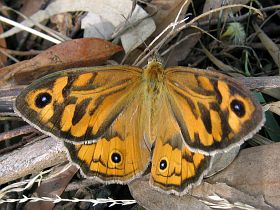
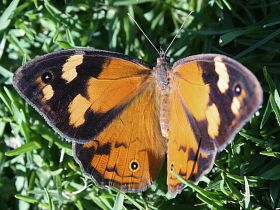
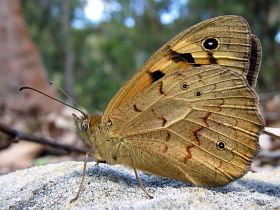
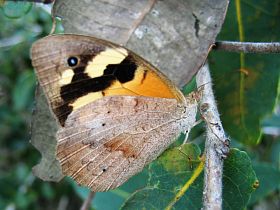
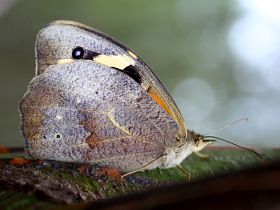
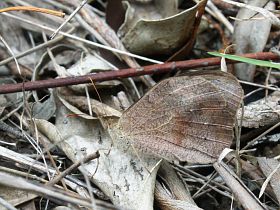
Heteronympha merope subsp. duboulayi
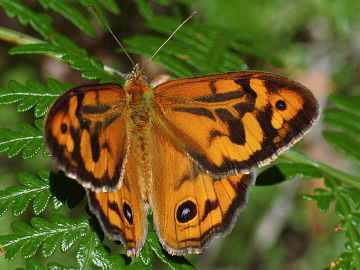
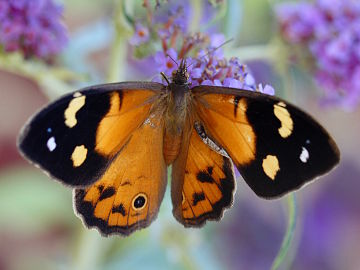
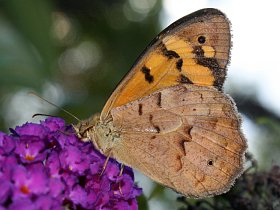
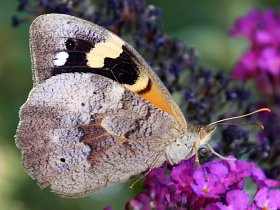
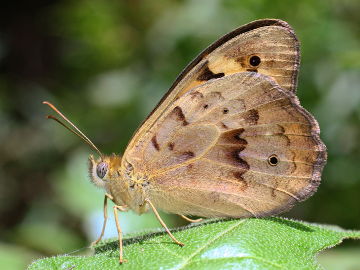
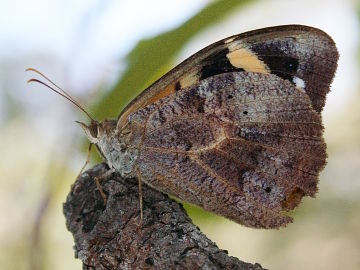
Heteronympha merope subsp. salazar
